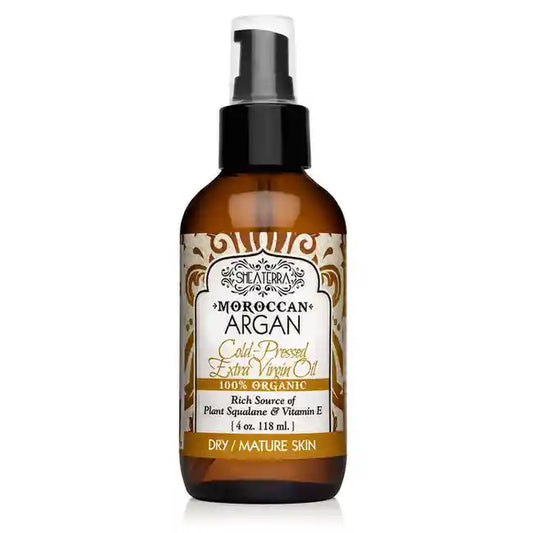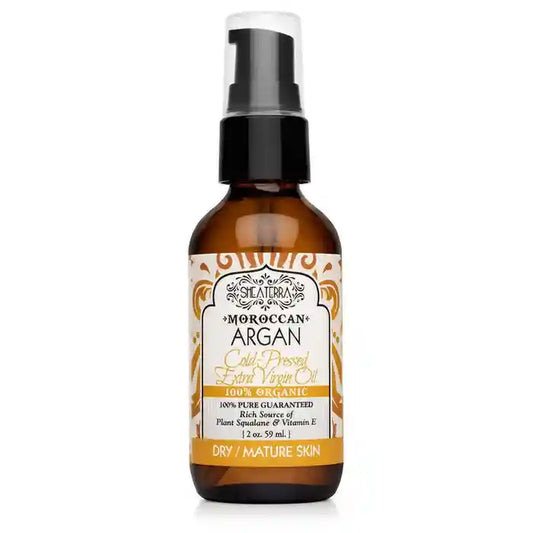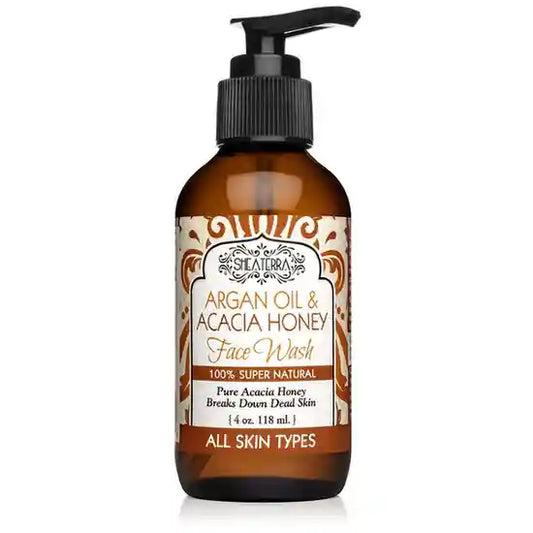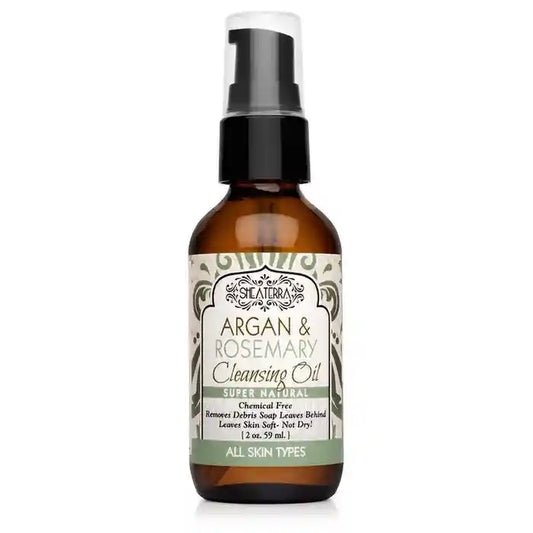
In 2003 one of my Moroccan employees introduced me to a bottle of argan oil that his mother had someone make for him. It was roasted and some debris of the nuts sat at the bottom of the bottle. It smelled and tasted so good. I found the oil remarkable, not so much for putting on the skin but for eating. I soon began receiving container loads of pure argan oil along with my amazing ghassool and fragrant rose water. Although completely unheard of in the US, the French, frequent visitors in Morocco, had been enjoying the benefits for decades. I recall meeting a man in a trade show a few years later who displayed argan as one of his European company’s line ups. “Argan oil is such a nice oil. Too bad its name is so similar to argon the gas. I think no one will ever use it just because of its name,” I said. He agreed with me as we shook our heads thinking it was just too bad that argan was cursed with such a name. Little did I know that it would become a world-wide sensation in less than a decade later.

What is argan? The Latin name for argan is argania spinosa. The argan tree grows wild in south-western Morocco although some can be found in Algeria as well. The tree is believed to be a survivor dating all the way back to the Tertiary Period. It is often quite gnarled and has a similar appearance to the olive tree. The trees are found growing in the wild where humans and nature have been living together harmoniously for thousands of years. Often crops are planted around the trees to avoid cutting them down. If you are familiar with sandy, beach type biomes then you can probably imagine the growing conditions of the argan tree. The tree only grows in an area with a particular type of soil spanning from the shore side to a section of Atlas to an area where the barren Sahara sands begin to encroach. The area is under threat from humans and climate change. In 1998 UNESCO declared the biome protected.

Each spring the trees produce a crop of roughly 150 kg argan fruits. The fruits are similar in shape to olives. They start out green but soon become the color and fragrance of apricot. Eventually the fruits darken and fall from the trees where they are eventually collected from the ground. It takes a tree about 30 years to produce their first crop. And of the bulk of the non-edible fruit, only two small slivers of fruit will be used to produce argan oil.

How is argan oil produced? Today argan oil is often made by machines. Sadly these foreign investors have undermined the traditional role that Moroccan women have played in the traditional production of argan oil. The government has encouraged, however, the formation of women’s groups to ensure that the age-old art of argan oil extraction is not lost. The work is tedious and takes many hours to make a single liter. And I should know as I have made the oil several times myself. After the dried fruits are collected and stored for several months to allow time for the oil to peak, the fruits must then be decorted. This is done in stone-age fashion. The dried fruits are separated from the nuts by hitting them with a hand held rock up against a larger rock.

The hard shelled nuts are then banged in a similar fashion to until they crack open and reveal the tiny slivers of “almonds” inside. If the oil is to be eaten the “almonds” are then roasted over an open fire. If used for cosmetic oil the “almonds” are not. The nuts are then put into a small stone mill which is hand turned to turn the “almonds’ into paste.

Whew! Next the paste is mixed with a little boiling water and hand kneaded for a few hours until the oil starts to separate from the paste. The oil is then hand squeezed from the paste until as much oil can be wrung out as possible. The oil is then filtered and bottled. The remaining oil is cake is then fed to livestock.
What are the benefits of argan oil? Argan oil has many nutritional benefits which we will not cover here. Traditionally in Morocco it is this edible argan oil that is mostly sought after. It is expensive even in Morocco so it is a valued resource. What is now popular around the world is the unroasted oil used for beauty purposes. In comparison with most other oils that can be used on the skin, argan oil works in harmony with skin. It soaks into the skin well leaving the skin feeling dewy and fresh rather than oily. It is noncomedogenic and thus does not clog pores when used in moderation. It is a long lasting oil giving nearly a full day of protection against moisture loss. Berber women have long used argan oil to produce lustrous, long hair with little frizz and split ends. The oil nicely coats the hair protecting it from breakage without leaving it overly oily. Applied regularly to the scalp the oil is known to decrease the rate of falling hair.

How is argan oil used? Traditionally argan oil is used in the hammaam, an open steam room. After a deep cleansing argan oil is massaged into skin and scalp. In France and other European countries hammaam treatments have also long been popular. As argan oil has spread across the globe it is found in more and more skin and hair care products. The best way of utilizing argan oil, however, is it buy 100% pure argan oil from a respected source and massage it daily into face after washing and into the hair prior to washing. A little bit of argan oil can be applied to hair after washing to make the hair conditioned and shiny.
How eco-friendly is argan oil? Argan oil is one of the most eco-friendly products on the market today. The Argan Forest has now been protected. Inhabitants of the forest region are now seeing benefits of not allowing their animals, goats and camels, to graze on the argan fruits and leaves. The fruits grow in the wild, are hand collected once fallen, and many argan oil production areas are not far from where the fruits are collected. With the exception of chemical or machine extraction, the oil is produced by hand using Stone Age technology. The leftovers are not considered waste at all. The remaining cake etc. are used to feed livestock.

How do I know if I am purchasing a quality argan oil? The qualities of argan oil vary greatly in Morocco. Because the oil is so costly to produce it is often diluted with cheaper oils like olive, almond and sunflower. Some oil has a very strong, unpleasant aroma. This is due to poor manufacturing/ storage practices. A good quality argan oil will be mostly clear, golden yellow/ brown and have a slight nutty to soured aroma. The oil will not feel like a dry oil at all. When applied to skin it should absorb well without much of a greasy sheen. The oil should last on the skin for most of the day. Argan oil that is completely void of aroma could be deodorized argan oil or not argan oil at all. Always look for argan oil that has its distinct aroma so you can be assured that it is potentially genuine. Deodorizing of argan oil depletes its nutritional value.
Diluted argan oil often feels lighter, greasier and doesn’t last as long. Sometimes trying a few brands is necessary to understand what a pure, high quality argan oil should feel like. Shea Terra Organics has over a decade long reputation for selling only the highest quality, pure argan oil at a reasonable price. We purchase our oil far from the salty shoreline to improve the quality of our oil. Our oil is flown directly from production for freshness.





